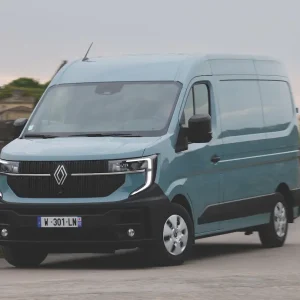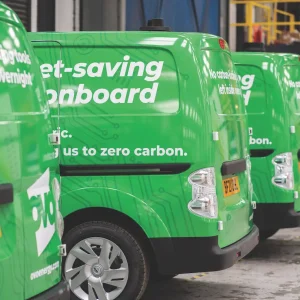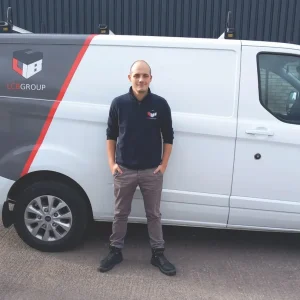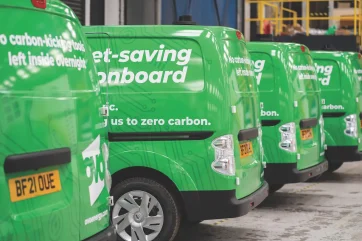
Switching an entire van fleet over to electric models is a major challenge. It is one that OVO Energy senior fleet and supply chain manager, S-J Mitchell, has eagerly and successfully embraced, however, which is why What Van? has made her its Fleet Manager of the Year for 2025. “I’ve developed and executed an electrification strategy that has reduced emissions and improved vehicle utilisation,” she says.
The transition to battery-electric began in 2020. With the Covid-19 pandemic in full swing at the time, and the subsequent shortage of automotive components and long waits for light commercials to be delivered, it wasn’t an easy policy to pursue.Added to these concerns were all the issues surrounding the provision of domestic and publicly-accessible charging points and the willingness of drivers to accept battery-powered vans.
By 2022, however, just under 50% of the OVO fleet was electric. The number of electric vans in operation rose by 237% between 2021 and 2022. “That was a fantastic result considering the challenges,” she observes. An impressive 375 electric Vauxhall Vivaros went into service as part of a total of 455 battery light commercials on the company’s books, and OVO said goodbye to more than 2,000 conventionally-powered vans.
While average van CO2 emissions totalled 144.03g/km in 2021, they had fallen to a mere 6.6g/km by September 2024. At the time of writing, the fleet was 96% electric with the aim of 100% by the end of 2025.
Mitchell and her colleagues are well aware that going electric involves a lot more than simply handing fleet drivers the keys to their newly-arrived zero-emission vehicles and telling them to get on with it.
As part of its embrace of zero-emission technology, OVO has installed over 280 charging points at the homes of mobile engineers who drive its electric vans.
They are fitted free-of-charge for all eligible employees by OVO’s in-house technicians.
Since 2021 the company has partnered with Mina to ensure drivers are properly reimbursed for the cost of the energy used. It has rolled out online electric van driver training modules too.
It has introduced a route planning package which drivers are encouraged to
use when organising their journeys bearing in mind range and the availability of charging facilities.
Reorganising the way in which jobs are allocated has reduced mileage. So has the introduction of lockers near to engineers homes in conjunction with ByBox to
which all the tools and parts they need are delivered.
Alternatives to using pricey public charging points in circumstances where domestic charging is impractical are being explored, including the use of suitcase-style portable charging units which can be carried in a vehicle.
OVO has implemented other ways of making the fleet more sustainable. They include working with Sortimo to reuse load area racking when vans are disposed of and replaced.
Light commercials are being liveried using recyclable film. When it is eventually removed from a van it is reused to make items such as warning cones.
Before 2021, OVO’s vans were on a five-year/60,000-mile replacement cycle. On going electric, the company decided to switch to a three-year/36,000-mile replacement policy, reasoning that the shorter change cycle would allow it to take advantage of the latest technology.
The switch makes sense given the pace at which ranges are lengthening, and charging times reducing.
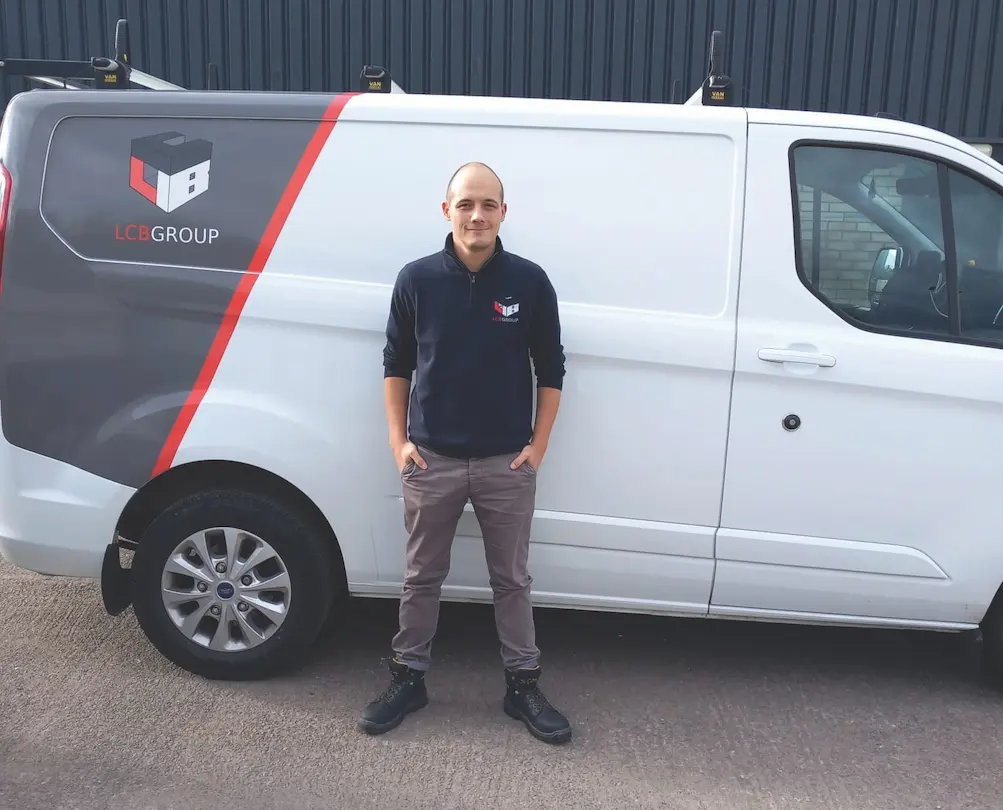
Highly Commended: Sean Hewings, LCB Group
Taking an axe to excessive repair and maintenance expenditure is one of
the key reasons why Sean Hewings, fleet manager at buildings maintenance
and construction company LCB Group, has been awarded our Highly Commended accolade.
Newly-responsible for more than 300 light commercials, he discovered that the business was spending over £100,000 annually maintaining and repairing vans more than five years old, which made up 25% of the fleet. “This accounted for more spend than the remaining 75%,” he remarks.
As a consequence he has drawn up a plan to replace light commercials once they have reached their fifth anniversary. That will mean that more of the fleet’s vehicles will be covered by warranty, repair costs will fall and they will fetch more money second-hand because they are being disposed of at a younger age.

